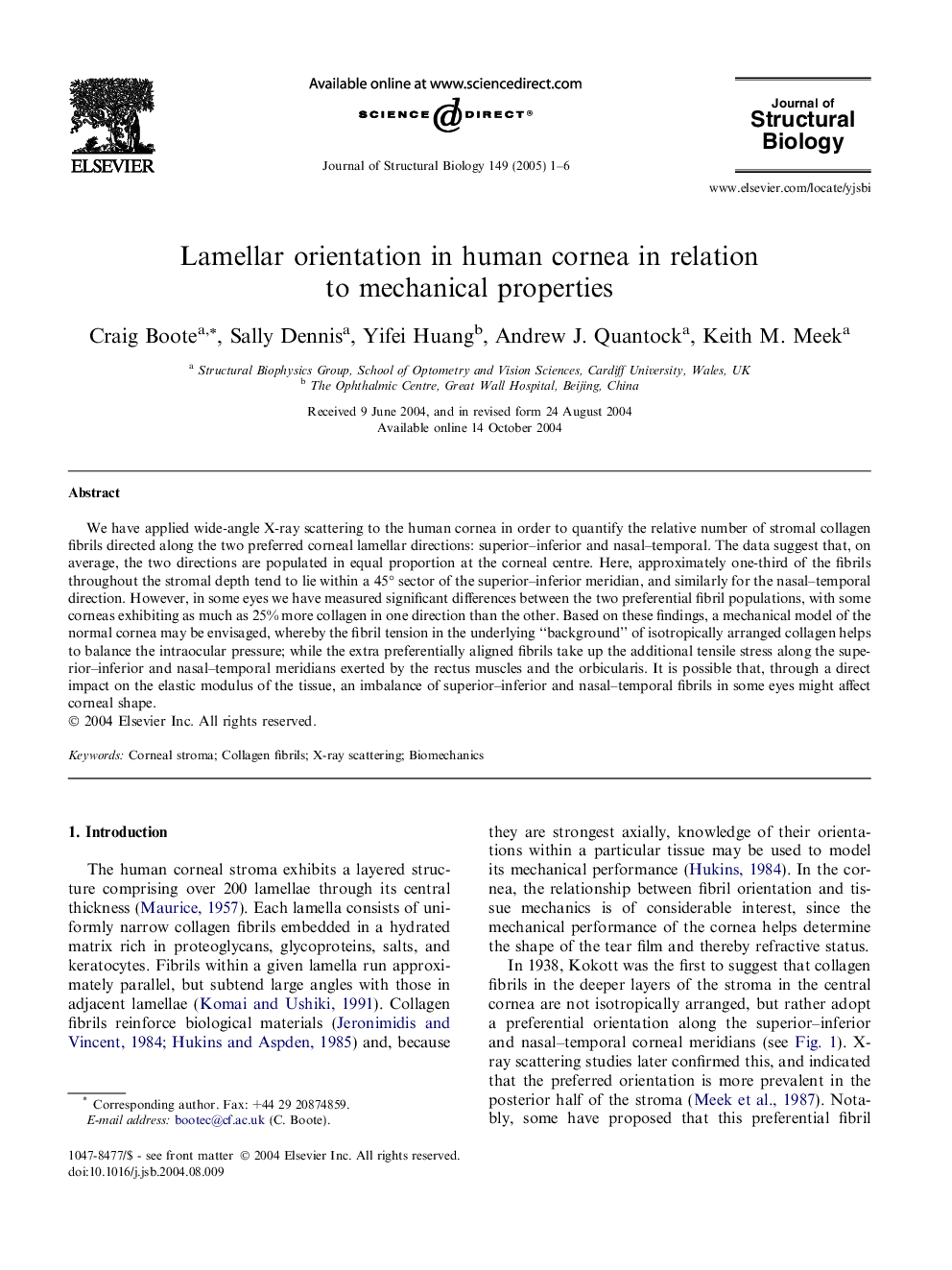| Article ID | Journal | Published Year | Pages | File Type |
|---|---|---|---|---|
| 9139127 | Journal of Structural Biology | 2005 | 6 Pages |
Abstract
We have applied wide-angle X-ray scattering to the human cornea in order to quantify the relative number of stromal collagen fibrils directed along the two preferred corneal lamellar directions: superior-inferior and nasal-temporal. The data suggest that, on average, the two directions are populated in equal proportion at the corneal centre. Here, approximately one-third of the fibrils throughout the stromal depth tend to lie within a 45° sector of the superior-inferior meridian, and similarly for the nasal-temporal direction. However, in some eyes we have measured significant differences between the two preferential fibril populations, with some corneas exhibiting as much as 25% more collagen in one direction than the other. Based on these findings, a mechanical model of the normal cornea may be envisaged, whereby the fibril tension in the underlying “background” of isotropically arranged collagen helps to balance the intraocular pressure; while the extra preferentially aligned fibrils take up the additional tensile stress along the superior-inferior and nasal-temporal meridians exerted by the rectus muscles and the orbicularis. It is possible that, through a direct impact on the elastic modulus of the tissue, an imbalance of superior-inferior and nasal-temporal fibrils in some eyes might affect corneal shape.
Related Topics
Life Sciences
Biochemistry, Genetics and Molecular Biology
Molecular Biology
Authors
Craig Boote, Sally Dennis, Yifei Huang, Andrew J. Quantock, Keith M. Meek,
